How to turn up the dials in your next workshop
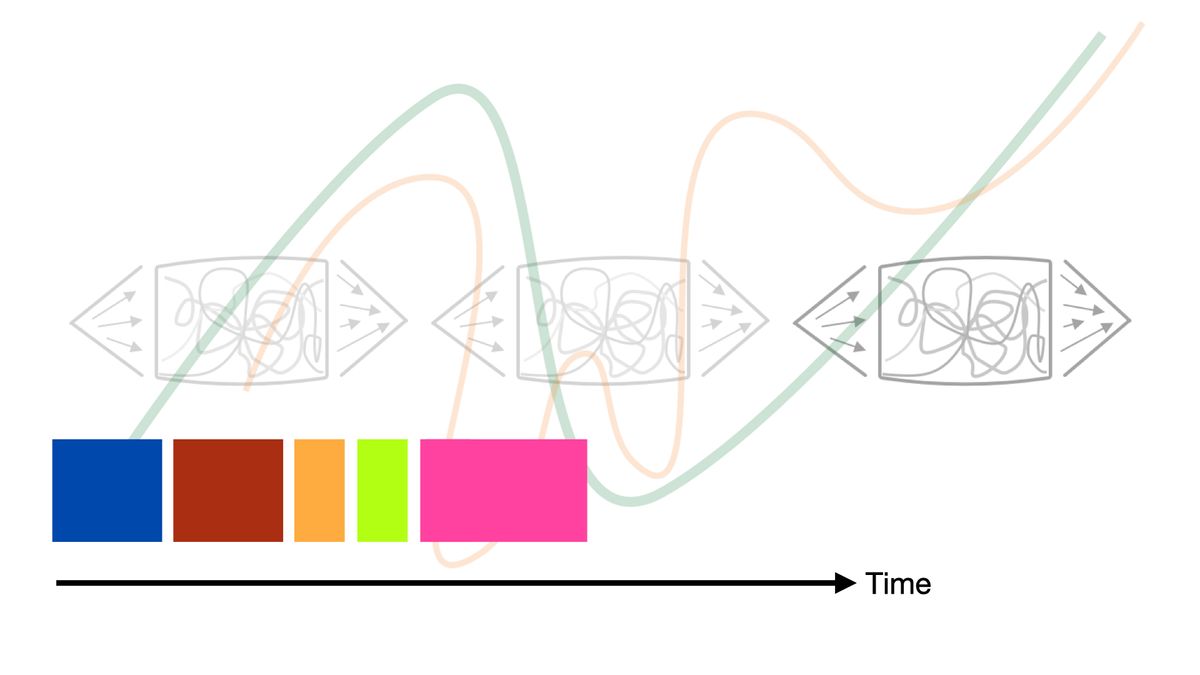
One of the best things about workshops is the ability to mix and match ideas, formats, activities, and themes.
We can shift from one lane to another; bring in different concepts; sprinkle in story; encourage exploration.
Workshops are a responsive space where change happens.
However, it gets a little more challenging when we move things online.
The tension between order and chaos shows up more easily, and the flexible frame we use can start to feel rigid and brittle.
We may be tempted to revert back to the ways of old, those crutches we once used; grafting what was a safe yet passive IRL way of doing things into an online environment, when instead we should embrace the opportunities for an active, energetic experience.
There are many ways we can do this. Here’s one way of looking at our workshop structure and using three dials to crank up the colours, or turn down the glare.
First, rotation.
Rotation
One of the key tenets of a workshop is its use of multiple delivery formats.
We can use these in a linear manner, but we can also rotate between them: from lecture bit; to Q&A; to small group discussion; to a hands-on activity.
This idea of rotating between formats every 30 minutes (or every 15 when we’re online) instantly adds some surges and curves to the energy, the learning, the connection. It’s hard to overstate what a big difference this can make.
That’s the first dial – and it’s one we can have our fingers on throughout our design phase.
We can go a couple of steps further though. First, timing.
Timing
Let’s take a look at our various formats first. Here they are as coloured blocks. For this example, we don’t need to worry too much about which format relates to a particular colour.
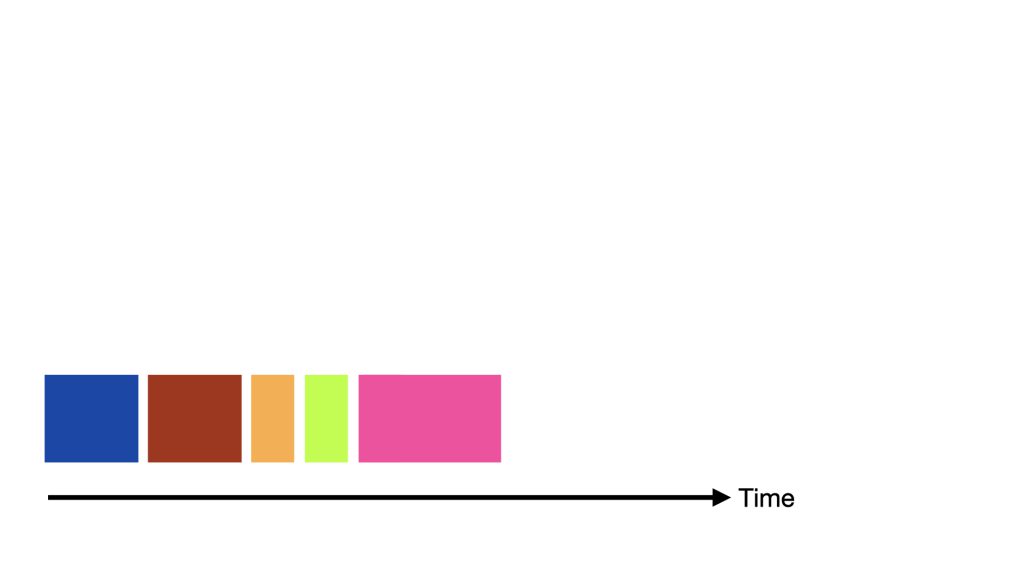
Next, let’s lay these blocks on top of our learning curve and narrative curve as well as the diamonds we use for our session structure (more on these in separate posts). Doing this helps us sense where we may see energy begin to dip.
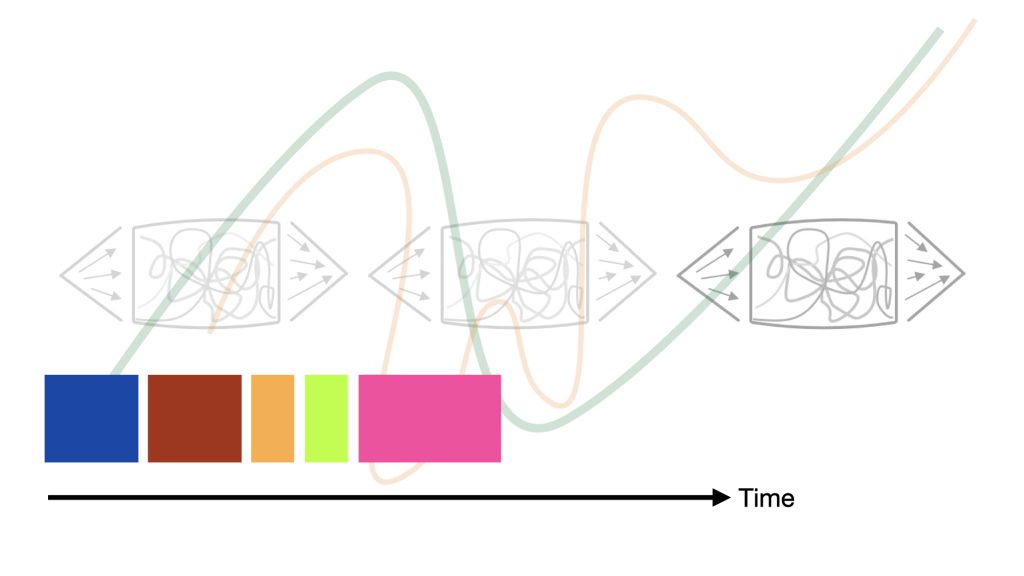
Our formats definitely go a long way to addressing this (e.g. a hands-on or a pair discussion will bring the energy back up after a longer lecture portion).
We can of course adjust the duration of each format – as you can see here the orange and green are shorter than the others. Changing the durations can do a lot for energy too – 15 mins of lecture, 5 min pair discussion, 10 min group discussion, 15 min q&a, and so on.
These two elements – changing format and duration – can make a huge impact; changing a flat 2D session into something far more energetic and colourful.
Let’s go one step further.
Intensity
As well as switching formats, we can turn the dial up and down when it comes to intensity.
Here are our formats again.

This time, we’re going to change out our Y-axis from being focused on energy to intensity. Here’s what happens.
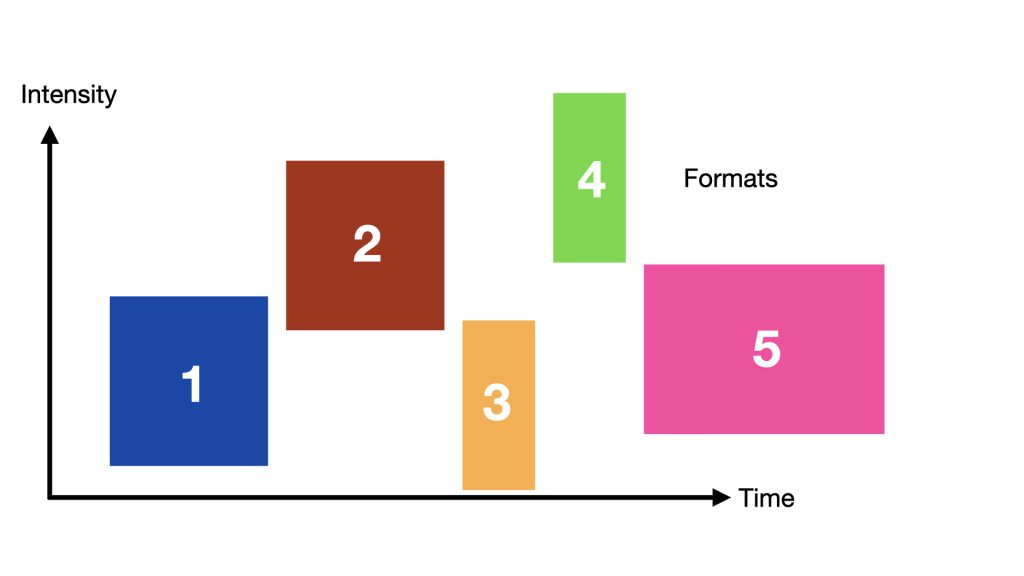
By nature, some formats will be more intense than others – for example, a rapid ideation hands-on (which could be number 4 here), will be more intense than a medium length lecture portion (which could be number 1).
We can then lay our narrative, learning, and structure back in again to help us see where we may want to ramp things up, turn it down, trim some time, or expand out.
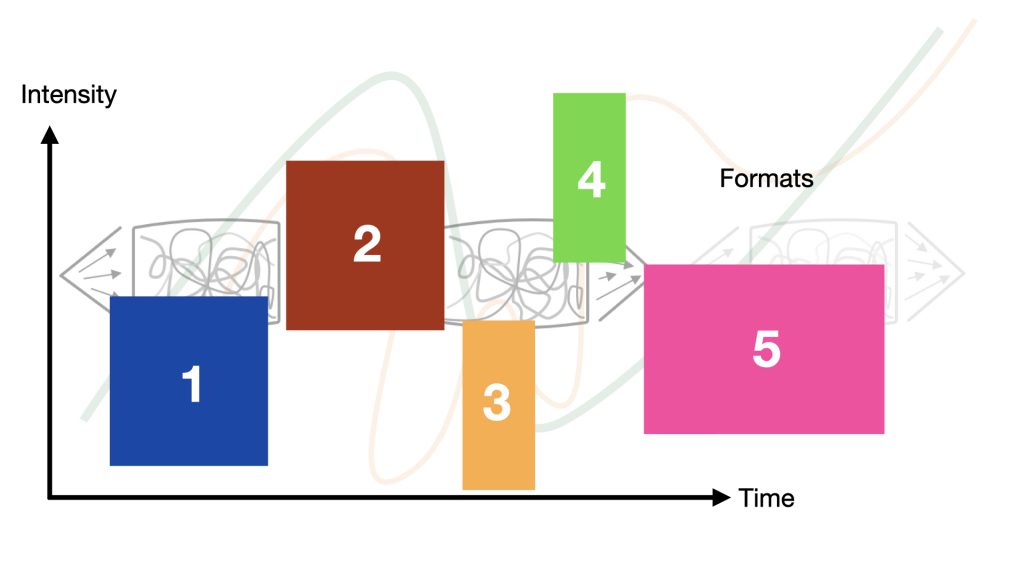
These three simple ways to look at our session – format, duration, and intensity – can easily improve any flavor of workshop.